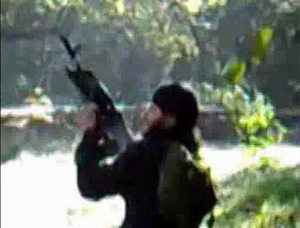Arshty By Usam Baysayev, special to Prague Watchdog
Oslo, Norway
I have reflected for a long time on what to say about the events at Arshty, and how to say it. It is not really necessary to describe the incident, listing the names of the dead and how they were killed. My colleagues at Memorial have already collected and published all the information we have. It’s on some of the details that I want to concentrate now. I think they may give an idea not so much about this particular event as about the nature of the governments that have been established in Chechnya and Ingushetia.
These governments often try to show a concern for those whom they govern, and for their safety. They like to say that the people have been saved from total destruction, or prevented from being drawn into war. In other words, the governments of both republics would like the people to sees them as an independent force with its own approach to the solving of problems which supposedly Moscow now cannot ignore. Many, though not all, are ready to believe it. Not only in the West, but also among Russian political analysts and other expert observers. The events at Arshty showed that talk of even a relative degree of independence on the part of the Chechen and Ingush governments may be somewhat exaggerated.
Long before the beginning of the operation, the local administration in the Chechen village of Achkoi-Martan in the Sunzhensky district of Ingushetia issued official passes to all those villagers who wanted to go into the forest to pick ramson (wild leeks or garlic). These passes contained the holder’s name, the serial number of his passport, his place of residence, and so on. With them the holders could freely travel through the Chechen, Ingush and federal checkpoints in the area between Arshty, Bamut and Achkhoi-Martan.
At dawn on February 11 a large number of people were moving in this direction. There were trucks and buses. These were not stopped. No warnings, oral or written, were given. No attempt was made to stop them at Arshty, either. People rode through the entire length of the village, a distance of several kilometres, and leaving the trucks and buses outside the local cemetery walked into the forest – as they had done many times before. Thus, the Ingush authorities, in the form of the local administration, were well aware that in addition to the insurgents who live in the forest there were also civilians.
From this I do not want to draw too harsh a conclusion, and so I propose the following interpretation: the people who planned the operation did not inform the leaders of Chechnya and Ingushetia beforehand. It is, of course, hard to believe this, because most of those leaders sit on the anti-terrorism commission. But perhaps they were afraid of an information leak. Or, perhaps they feared that if they noticed that there were no ramson pickers in the forest, the insurgents would go on the alert, or even worse – withdraw to their permanent bases in the mountains from where, if the inhabitants of Arshty are to be believed, the insurgents had recently emerged for special purposes of their own.
Whatever the truth of the matter, after the start of the operation the Chechen and Ingush authorities could have requested permission to evacuate the civilians. The civilians were there with the authorities’ knowledge and consent, after all. Instead of this, however, the authorities focused on making announcements to reassure the local population that the insurgents would not be permitted to cross into the neighbouring territory, that the border posts had been reinforced, and so on. There was not a word about the ramson pickers.
The pickers were mentioned the following day, when Arshty residents telephoned Memorial with accounts of what had happened. The residents claimed there had not only been adult civilians in the forest but also schoolchildren, and that some of the children had been killed. The Chechen and Ingush authorities responded by saying that the people were warned about the undesirability of their presence in the operation zone, that there were secret paths by which the irresponsible ransom pickers were able to bypass the military cordon to get to the battle zone, and that the insurgents had used them as “human shields” (though there has so far been no confirmation of this). In my opinion, whatever the truth of what happened at Arshty may be, these statements and others give a clear idea of the aim of the governments of all the republics of the North Caucasus today. Their function is mainly to provide a cover for the interests of the Russian security agencies.
Photo: "Newzz.in.ua". (Translation by DM) © 2010 Prague Watchdog (see Reprint info). (P,DM)
DISCUSSION FORUM
|

